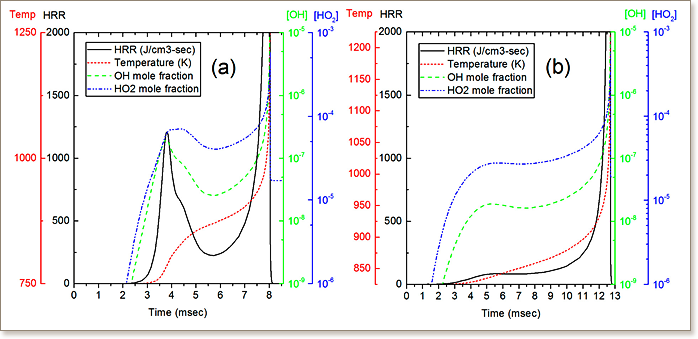Chemical kinetic insights into the octane number and octane sensitivity of gasoline surrogate mixtures


Gasoline octane number is a significant empirical parameter for the optimization and development of internal combustion engines capable of resisting knock. Although extensive databases and blending rules to estimate the octane numbers of mixtures have been developed and the effects of molecular structure on autoignition properties are somewhat understood, a comprehensive theoretical chemistry-based foundation for blending effects of fuels on engine operations is still to be developed. In this study, we present models that correlate the research octane number (RON) and motor octane number (MON) with simulated homogeneous gas-phase ignition delay times of stoichiometric fuel/air mixtures. These correlations attempt to bridge the gap between the fundamental autoignition behavior of the fuel (e.g., its chemistry and how reactivity changes with temperature and pressure) and engine properties such as its knocking behavior in a cooperative fuels research (CFR) engine. The study encompasses a total of 79 hydrocarbon gasoline surrogate mixtures including 11 primary reference fuels (PRF), 43 toluene primary reference fuels (TPRF), and 19 multicomponent (MC) surrogate mixtures. In addition to TPRF mixture components of iso-octane/n-heptane/toluene, MC mixtures, including n-heptane, iso-octane, toluene, 1-hexene, and 1,2,4-trimethylbenzene, were blended and tested to mimic real gasoline sensitivity. ASTM testing protocols D-2699 and D-2700 were used to measure the RON and MON of the MC mixtures in a CFR engine, while the PRF and TPRF mixtures’ octane ratings were obtained from the literature. The mixtures cover a RON range of 0–100, with the majority being in the 70–100 range. A parametric simulation study across a temperature range of 650–950 K and pressure range of 15–50 bar was carried out in a constant-volume homogeneous batch reactor to calculate chemical kinetic ignition delay times. Regression tools were utilized to find the conditions at which RON and MON best correlate with simulated ignition delay times. Furthermore, temperature and pressure dependences were investigated for fuels with varying octane sensitivity. This analysis led to the formulation of correlations useful to the definition of surrogates for modeling purposes and allowed one to identify conditions for a more in-depth understanding of the chemical phenomena controlling the antiknock behavior of the fuels.

"KAUST shall be a beacon for peace, hope and reconciliation, and shall serve the people of the Kingdom and the world."
King Abdullah bin Abdulaziz Al Saud, 1924 – 2015
Thuwal 23955-6900, Kingdom of Saudi Arabia
© King Abdullah University of Science and Technology. All rights reserved